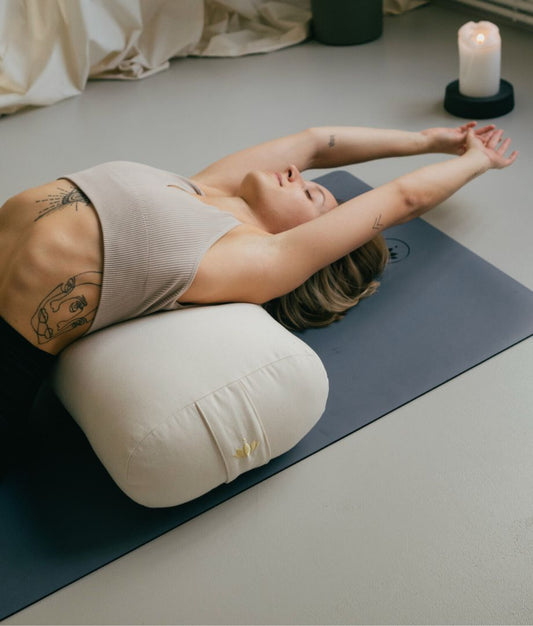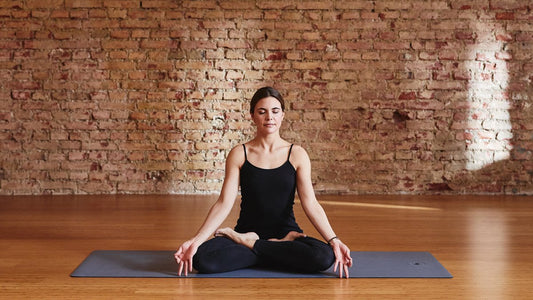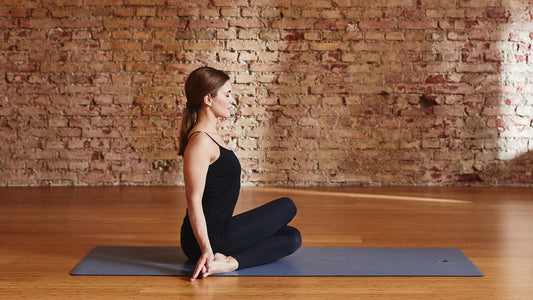
Set-Offers
Save when you buy a set
Shopping cart
Your shopping basket is empty
Yoga

Meditation
Bundles

| Meditation
Meditating - what does it actually do? Skeptics often ask this question, because at first glance meditation seems to be nothing more than "just sitting" (Japanese shikantaza ). In fact, however, the so-called Zen meditation is about much more than simply remaining in one position: the focus is on the present moment. You can read here how you can learn Zen meditation as a beginner and what it actually is.

Strictly speaking, there are different types of meditation . Yoga is also meditation combined with movement. But what we usually think of first when we hear the word is Zen meditation. In so-called zazen, you sit completely still with your eyes closed for a certain period of time.
The goal of zazen is just to be aware of the moment . Rather than trying to understand everything, Zen meditation is about looking at the now objectively. In concrete terms, this means: Even if you think of something supposedly urgent during the practice, you don't stop because of that, but instead recognize this fact and let it go away again.
In Zen meditation, it often helps, especially for beginners, to breathe consciously, but more on that later. For the moment, only this much can be said: The organs are better supplied with energy through calm, deep breathing . Last but not least, meditation also benefits physical health.
Incidentally, Zen meditation is based on a teaching from Mahayna Buddhism and goes back to the 6th century. This term does not mean a practice that is carried out selectively, but rather an attitude that can be applied in every situation in life : paying attention to the moment, to thinking and acting.
Zazen is a form of meditation that practically anyone can learn. You do n't need any large equipment or any specific physical requirements . All you need is your head - and a bit of practice, because meditation is also a matter of patience . Sitting still for a long period of time is not so easy for many beginners.
Forget the classic image of the person in the perfect lotus position. This position is, of course, wonderful for Zen meditation, but not generally comfortable for everyone. You can only stay in a comfortable situation for a long time. If necessary, use a meditation cushion as a base or lean against a wall.
The main thing is that you can sit as upright and stable as possible. It is good to meditate in the following positions:
When you have found a good sitting position, lower your chin very slightly so that your neck and spine are as straight as possible. Your hands are in your lap with your thumbs touching lightly. You can close your eyes or leave them half open .
The ideal length of a Zen meditation is difficult to determine. Advanced meditators meditate for 30 minutes or more, while beginners can only stay focused for a few minutes. The only basic rule of meditation when it comes to timing is therefore: establish a routine and always meditate at the same time. Zen meditation is particularly useful in the mornings and evenings, because that way you can start the day with more concentration and you can calm down better before going to sleep.
Now, if you want to try Zen meditation, there is no set set of steps you need to follow. So exercises can only be spoken of to a limited extent, because ultimately you just have to find the little tricks that bring you the most when meditating. Here are the 6 best tips for Zen meditation beginners:
Zen meditation is very simple in itself, yet incredibly effective. By consciously noticing the moment , you learn to remain more relaxed in everyday life and to act more confidently. However, simple does not mean that you will become a meditation professional overnight: For successful Zen meditation you need patience, practice and the willingness not to primarily want to understand everything, but simply to observe . But if you bring these qualities with you, you can only benefit from Zen meditation!

Iyengar Yoga bears this name thanks to its inventor, BKS Iyengar. In the Iyengar Yoga practice you will find typical elements of Hatha Yoga, so th...
Continue reading
Alongside various styles of yoga, meditation has been a common relaxation practice in our society for some time. Many people swear by the so-called...
Continue reading
There are no comments yet. Be the first to leave a comment!